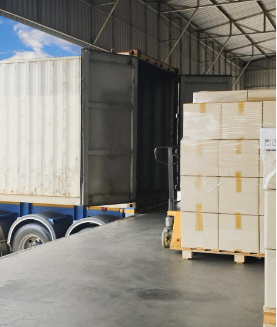Freight Terminology
Everything you need to know

Most questions, especially from new buyers, pertain to shipping. Sometimes the cost can be overwhelming, as it does impact your profit margins. So, as you navigate the world of freight, here are a few terms you should know.
ACCESSORIAL: An additional service that can be requested for an LTL shipment. Common accessorials include liftgates and residential deliveries/pickups. Additional cost varies depending on service and carrier.
BILL OF LANDING (BOL): Document used to show all relevant details for a freight shipment. BOLs include pickup and delivery information, weight, class, contacts, billing, and carrier information. The BOL is given to the carrier at time of pickup and accompanies freight through transit.
CARRIER: A company that owns their own equipment and transports freight across the country using drivers, dispatchers, and terminals.
CONSIGNEE: The receiver of a freight shipment. The opposite of a shipper.
DENSITY: A number signifying an item’s pounds per cubic foot. Density is determined using the length, width, height, and weight of an item. Density is used to determine freight classing and pricing and is one of the most important aspects of LTL shipping.
FREIGHT BROKER: A third party company that supplies shipping rates and service to customers and acts a bridge between carrier and customer. A full-service broker provides complete shipping service (often using TMS) to their customers on top of lower shipping rates.
FRIEGHT CLASS: A number assigned to freight shipments to identify that item’s transportability. Freight class is used to determine shipping cost and pricing and is notated on the BOL by the NMFC number.
HANDLING: A factor in determining an item’s freight class. Items that are fragile or oversized are often harder to handle, resulting in a higher freight class.
LESS THAN TRUCKLOAD (LTL): A type of freight shipping focused on moving shipments that take up less than a full truckload. LTL has its own structure for pricing and quoting (including volume quotes). In addition, LTL has its own carrier and broker structure, separate from Truckload shipping.
LIFTGATE: A lift attached to the back of some carrier trucks that assist with loading and unloading freight when a dock or forklift is not available. Often used for residential deliveries and pickups.
NMFC NUMBER: National Motor Freight Classification System number that notates an item’s class on the BOL.
PRO NUMBER: Identification number assigned to freight after it has been picked up by carrier that allows for tracking/ tracing.
RECLASS: Invoice discrepancy when a carrier invoices a shipment at a higher or lower class than noted on the BOL.
REWEIGH: Invoice discrepancy when a carrier invoices a shipment at a higher or lower weight than noted on the BOL.
TERMINAL: Carrier hub where LTL shipments are moved during transit. Carrier terminals are situated across the country and come in varying sizes.
TRANSPORTATION MANAGEMENT SYSTEM (TMS): Online freight system used by carriers and freight brokers to coordinate and organize customer shipping needs, including but not limited to: building BOLs, creating shipments, tracking shipments, and invoicing customers.
TRUCKLOAD (TL): A type of freight shipping specializing in moving freight that requires a full truckload of space. This aspect of freight is wholly different from LTL and has its own carrier and broker structure.
W&I CERTIFICATE: Weight and Inspection certificate created by the carrier when a shipment is reweighed or reclassified.
You might also be interested in:
How to Get a Shipping Quote
Price shipping & consolidate
Home Improvement Resell Market
A large secondary market opportunity




